Storming back in: Guy Yanai shows his (new) goods
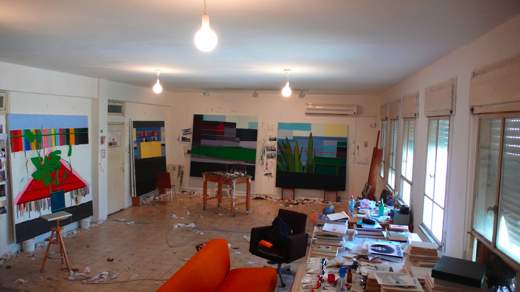
So, you know when you have this friend, this awesome friend whose life you’re so in tune with and then someone moves and you keep in touch and then it’s a year later and you realize you haven’t caught up for a long time… for no good reason? And you get that desire to call them and have a moment of hesitation because, well, how do you even start, and are you even the same people anymore? Then you get over yourself, and open that laptop or pick up that phone and find, to your delight, that you’d forgotten how much you like them, and wonder why the hell you lost touch anyways. That’s how we’re feeling about Guy Yanai’s work and general loveliness today. Gopher friend and senior correspondent Kyra was the ballsy get-back-in-touch’er, and caught back up with Yanai’s studio in Tel Aviv. Guy not only answered her interview, but photographed the space and even took her (and, by extension, us!) around the space with a video camera. So take a peek at what’s new with Yanai, you’ll be glad you did. (Interview by Kyra Choucroun)
When we interviewed you for the first time, we asked you how you would describe your art to a blind person. Has that changed?
There is the famous line from the Little Prince (That Jose Saramago so brilliantly used in The Gospel According to Jesus Christ) “It is only with the heart that one can see† That’s the great paradox of being a visual artist.  I guess my articulation has become sharper.  I’m more aware of how a painting of mine is built up in the conceptual realm.  I can say now that what interests me is what Susan Sontag called “an emotional situationâ€, sensuality, sexuality, feeling.  This is supported by the concept of the work, the linguistics of the work, and usually this adds layers and layers of meanings.  The best work excites me emotionally and intellectually.  Thats what I am striving for.
There are big differences between your previous work (Objects/Homages), which we featured in August 2009. Can you tell us why it changed? Was it something within you or extraneous circumstances shifting your artistic style?
I’m always trying to challenge myself, to put a leg out and make myself trip.  I am most comfortable when Im in discomfort. I don’t have a comfort zone of any kind. Everything is anxiety. Objects / Homages is from 2007. After two years of working abstract I wanted something more concrete to hold onto. These latest works are very large linens. I had just finished and shown a project of 42 small panels on wood, and wanted to do large work. If you look at the evolution of the work from 2007 to 2010 you see that it’s a slow one and might make more sense.
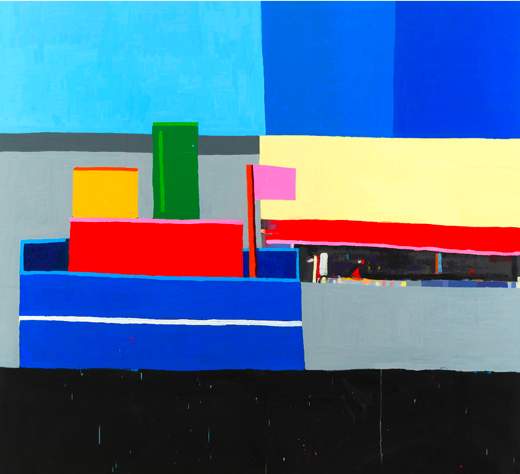
You have two beautiful children. Do you find it changes your art? In what way?
My children have had such a positive effect. Ava is still really small, but Romy has made me look at things in such a fresh way. Â The questions he asked, and the way he sees the world really inspire me. I would like to be able to look at things in the same way with the knowledge that I have. Mainly, though, Romy tells me what to paint: a boat, a car, and airplane, animals etc. And I listen to him. I’m about to start a project of 10 large panels just on the questions he asks me. I think that there is the highest level of sophistication in these questions and I hope to be able to mirror that in the work. But yes, Ava and Romy have brought me a renewed sense of urgency and a greater hunger for work.
Imagine yourself as one branch in a “family tree” of artists. Who makes up other branches? Â Who is part of the trunk?*
I do see myself in that way, a part of the big family of art. The trunk is made of (and this not diminish the hundreds of artist and painters that I absolutely love) Piero della Francesca and Henri Mattise. These are two people who I think of every day. Really a backbone, and creators of such profound work that I go back to thousands of times. The branches are filled and are dense with many green green leaves. Tal R, Philip Guston, Willem de Kooning, Wolfgang Tillmans, Olivier Zahm, Walker Evans, Nicole Eisenman, Dana Schutz, Picasso, Masaccio, Titian, David Hockney, Howard Hodgkin, Jonas Wood, Mark Grotjahn, Cezanne, just to name a few of MANY that came to my head. But most of my inspiration in the past years has come from films, fashion, photography, architecture, design. Charles and Ray Eames absolutely make me go crazy. Herzog and de Meuron are in my mind, the best architectural practices working today; every solution is particular and local. The three pillars to my thinking though are: John Zorn, Jean Luc Godard, and Paul Celan. A composer, A film maker, and a poet.  I’ve been utterly obsessed with all three of these for so long.  John Zorn taught me thats its possible to choose any ‘style’ you want.  That we can go in and out of styles and make them or own, that to choose one way of working (and it is a choice) is a lie. That each project can have its own lexicon and rules.  J.L Godard’s work is constantly changing, still today. The first time I watched Histoire du Cinema I cried. The density of information is brilliant. He sort of an editor of film and art, something that resonates highly with me. Paul Celan wrote in a language (German) that most of audience wouldn’t read in. Years ago, I sat with the person who was organizing the Hebrew translation from the Israel Foreign office. He told me that Celan wanted each poem in German beside the Hebrew and the Israel Foreign Office was not allowed to that in the 60’s because of the sensitivity around the German language then. The way Celan constructed, de-constructed, and re-constructed language has an immense affect on how I think pictorially.
What do you consider your personal place in society to be? Do you even believe in the concept of a ‘society’? Does it affect your art?
Society is complex, with many people having multitudes of associations, identities, and ideologies. National and religious identities have, in the west, become almost secondary in importance. I can understand why Margaret Thatcher said “There is no society, there are only individualsâ€, but I disagree with her. And having said that, most of the time, I feel rather removed from society, a sort of distant observer. This is true of Israeli society, and its true of American society, and definitely true of European society. Because of this distance (that is not self-forced) I can take, steal, use, render, interpret, and do whatever I want with all of the informations that come from all societies. It gives me a freedom to become a grand editor. The price is loneliness.
* this question courtesy of this site

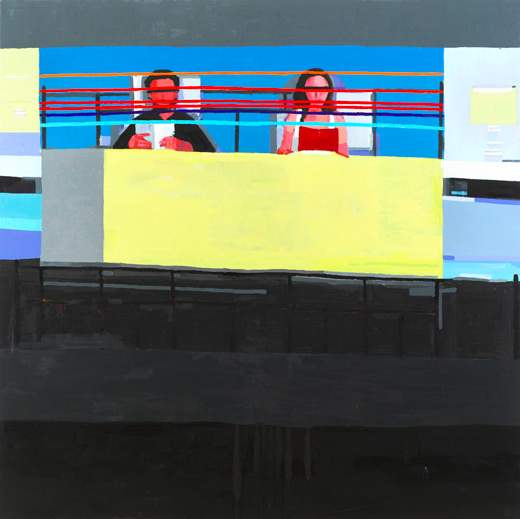
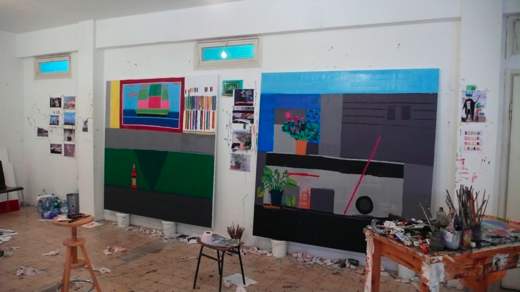
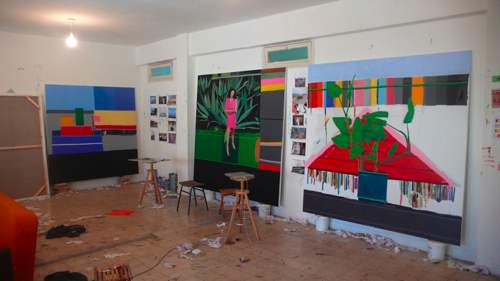
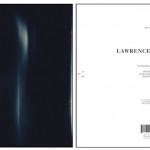
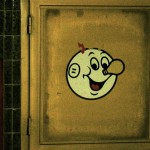
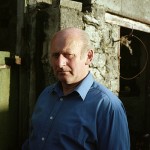

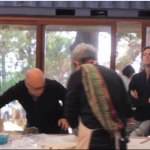
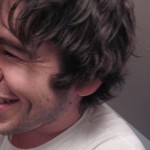

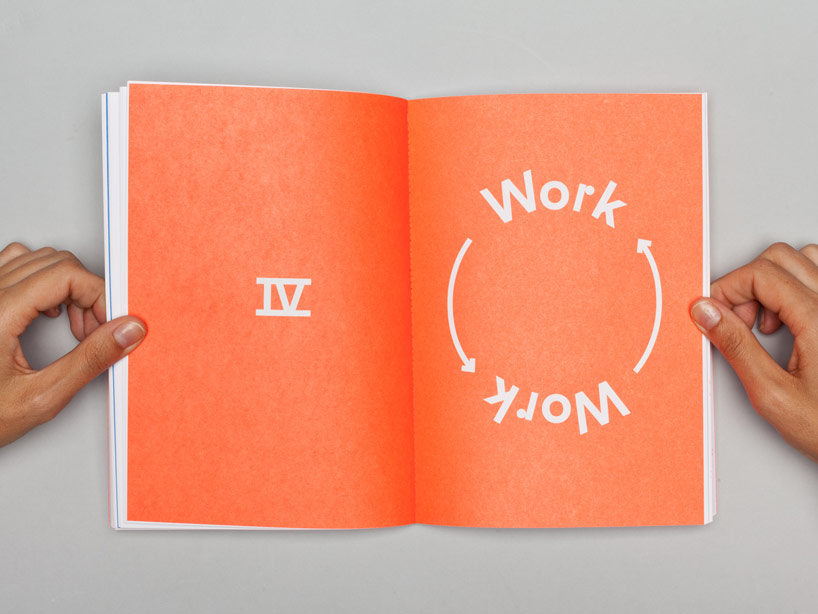

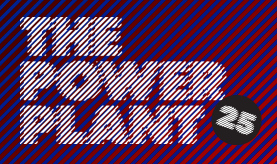
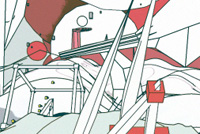
Leave a Reply